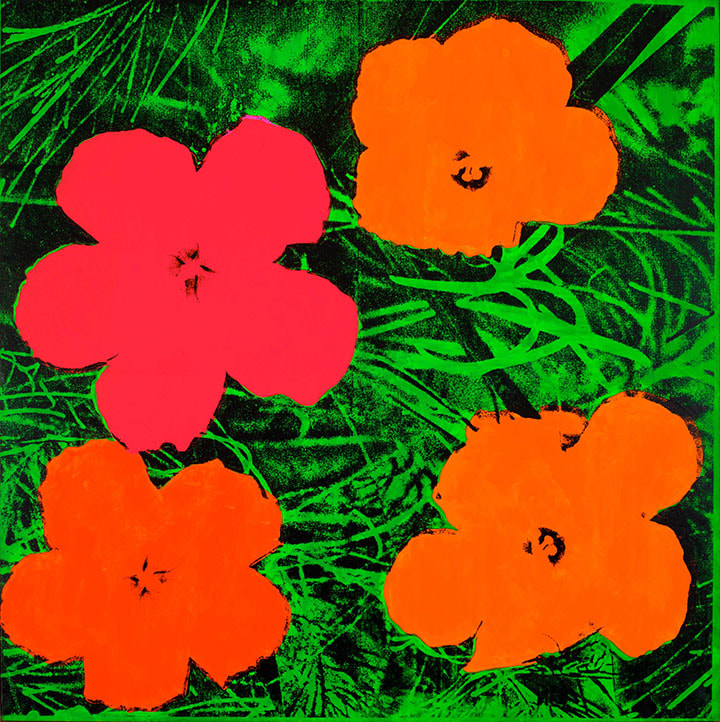|
Arts Editor: Christopher George Andy Warhol projected an ambiguous narrative of himself, this self-editing has kept the press and public fascinated with Warhol, even 30 years after his untimely death at the age of 58. From an early age, Warhol was aware of public image, and he based his career on the projections of religious icon, saintly portraits and movie star images that he grew up with. Warhol created religious art for a secular culture via his celebrity portraits and use of commercial objects. His early Marilyn is now one of the most recognised artworks ever. The religious icon and saint style portrait that he took this inspiration from go much deeper than the facade Warhol would have liked us to believe. His entrenched religious background was what he lived with and believed in to his core, deepening further close to his death with the works that he was producing. Religious iconography is apparent from the churches he would visit as a child with his mother Julia, who was a devoted Ruthenian Catholic. The icons and saints would be placed next to each other on flat backgrounds row after row. In his art we are witnessing the religion of celebrity that Warhol was presenting to the world in his pop art portraits. His childhood was a mix of religion and movie star portraits that he adored and which inspired his work throughout his life. One of the key subjects for Warhol was America, where the Warhola family had emigrated to from the rural hills of Poland. Warhol, as he became by dropping the ‘a’ from Warhola, is still one of the most famous Americans, let alone artists. So it is poignant today with the struggles America is having with immigration and racial issues during the current Trump administration, that Warhol was of immigrant heritage, brought up in an impoverished ghetto in Pittsburgh. Today Warhol would not be surprised where we have arrived in the world over 30 years after his death. During his life he was projecting and predicting much of the cultural, technical and philosophical issues that we are now living with on a daily and global basis. This new exhibition at the Tate Modern, the first in nearly 20 years examines Warhol’s background along with his queer self. His escape came at 12 years of age after his fathers death and a small amount of money had been left for Andy's education. The family gathered around Andy and gave the youngest of 3 boys their support and an opportunity. This opportunity created one of the most successful and famous artists ever. Andy produced works during times of immense social, political and technical change. It could be said that Warhol was the creative vessel that modernised culture and the way we have lived the past 50 years and beyond. Exhibiting some of his most recognisable works, the Tate Modern examines the experiment Warhol was attempting in his early career to break through as a serious artist by using commercial objects. This was the lead up to his ground breaking screen prints that we now know Warhol for. These are the works that broke him into the art world as a serious artist from a successful but unsatisfying commercial art background. Focusing on religion, death and identity, were Warhol’s three most used themes in his work, we get a better understanding of the man beneath the white wig. Understanding the supermarket he created of the arts, disposing of the Mona Lisa and replacing this icon figure with the figures of Debbie Harry and the Campbell soup cans. His creation of ‘Common’ism’, where we all have accessibility to art, classifying the Coca Cola bottle accessible as much to the richest in the world, as it is to the poorest. Everyone can own one. Several themes of the show work on the importance of the Factory. This space allowed ideas and people from all walks of life to gather, from the socialite and drag queens, to the distinguished, the celebrity and the drug addicts. All these people became the raw materials Warhol thrived on and creatively exploited throughout his career. The recreation of the Factory, along with The Velvet Underground and NICO film clips projected allows you to immerse your senses in the visuals, the sound, the creativity and the madness of Warhol’s Factory environment. In the last section of the exhibition we get to examine his final years and his journey back to religion, at a time when the AIDS epidemic was at its height, and mortality was on everyones agenda with death heavy in the air. “We are all processed through life” Andy Warhol died in1987 leaving a fascinating legacy we are still trying to understand. Andy Warhol Tate Modern 12 March – 6 September 2020
0 Comments
Leave a Reply. |
Sø•sceneA curated catalogue of things to do and see - exhibitions, events, films and galleries.
|





